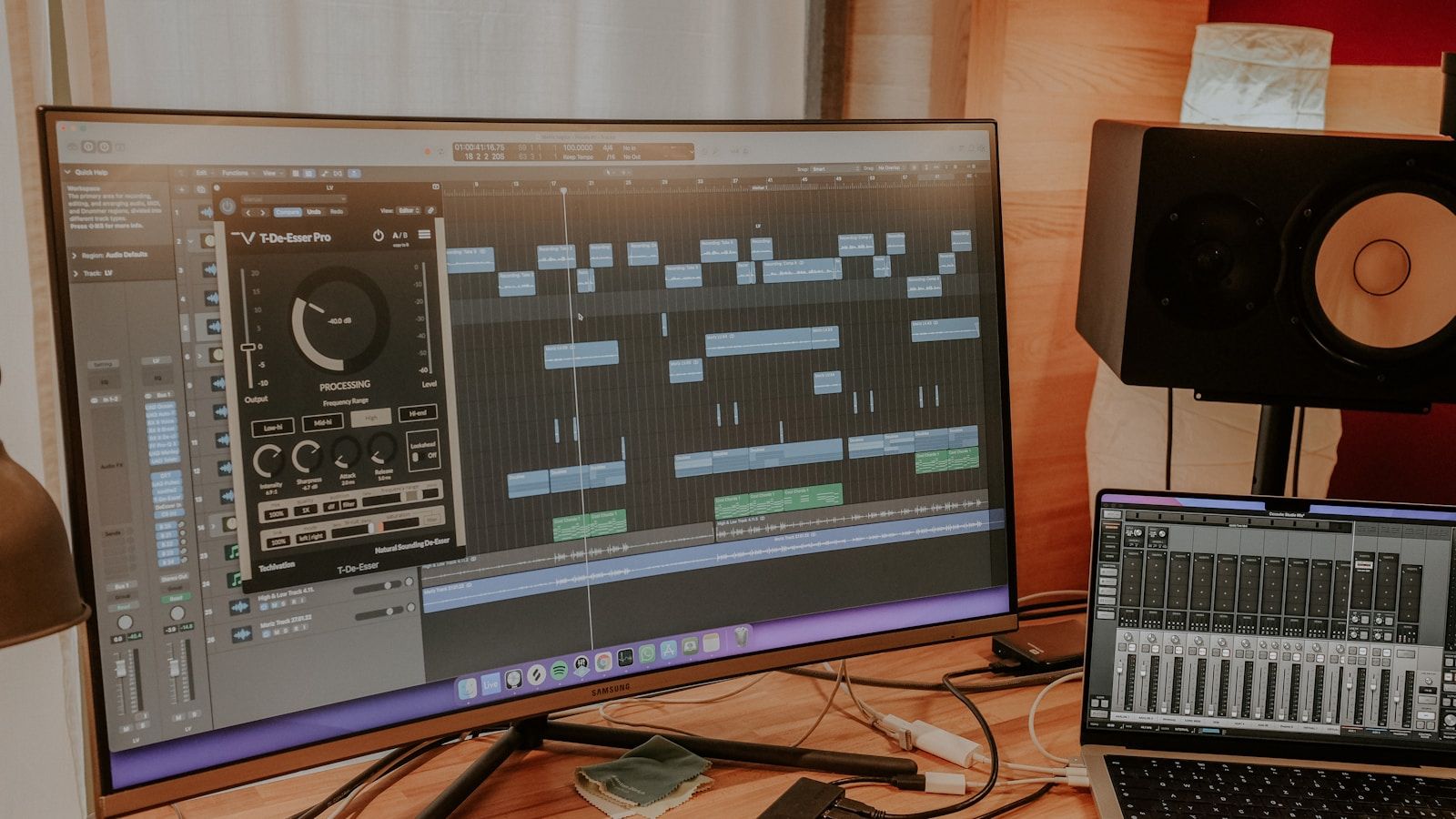If you’re interested in music production, you’ve likely heard the term “DAW.” It stands for Digital Audio Workstation, and it’s essentially the heart of modern music-making. But with so many DAWs available, finding the right one can feel overwhelming. This guide will simplify things for you by explaining what a DAW is, breaking down the features of some popular options, and helping you figure out which one suits your needs.
What is a DAW?
A Digital Audio Workstation (DAW) is software designed for recording, editing, and producing audio files. Whether you’re an aspiring musician, podcaster, or audio engineer, a DAW gives you the tools to manipulate sound on your computer. It’s like having an entire recording studio in one program.
Modern DAWs offer a wide range of features, from basic audio recording to advanced tools for mixing and mastering. Some even include virtual instruments and sound libraries to get you started with no additional gear. The best part? There’s a DAW for every skill level and budget.
Popular DAWs and Their Features
Now that you know what a DAW is, let’s dive into some of the most popular options. Each DAW has its strengths, so it’s important to match its features to your workflow and creative goals.
Ableton Live
Ableton Live is a favorite among electronic music producers and performers. Its intuitive design and focus on real-time production make it perfect for creating beats and performing live sets. One of its standout features is Session View, which lets you loop and trigger audio clips on the fly. It’s great for creativity and experimentation.
Key Features:
- Session and Arrangement Views for flexible workflows
- Powerful MIDI editing tools
- Extensive library of virtual instruments and effects
- Integration with hardware controllers like Push
If you love experimenting with loops and electronic music, Ableton Live might be the best DAW for you.
FL Studio
FL Studio, often called “Fruity Loops,” is known for its user-friendly interface and accessibility. It’s especially popular among beginners and beatmakers. The DAW’s piano roll is highly praised for its precision and ease of use, making it a favorite for crafting intricate melodies and beats.
Key Features:
- Intuitive drag-and-drop interface
- Built-in synthesizers and effects
- Lifetime free updates
- Compatibility with VST plugins
If you’re just starting out or enjoy creating beats, FL Studio is an excellent choice.
Logic Pro
Logic Pro is Apple’s flagship DAW and a powerhouse for music production. It’s packed with advanced features for recording, editing, and mixing. Many professional musicians and producers swear by Logic Pro for its seamless integration with macOS and its massive library of sounds.
Key Features:
- Comprehensive sound library
- Advanced mixing tools
- Flex Time and Flex Pitch for precise editing
- User-friendly interface
However, Logic Pro is only available for Mac users, so Windows users will need to look elsewhere.
Pro Tools
Pro Tools is the industry standard for audio recording and post-production. Used in studios worldwide, it’s ideal for professionals who need powerful tools for editing and mixing. While its steep learning curve might intimidate beginners, its capabilities are unmatched.
Key Features:
- High-quality audio engine
- Advanced editing and automation
- Support for large track counts
- Integration with hardware consoles
If you aim to work in professional studios or on big projects, Pro Tools is a great investment.
GarageBand
GarageBand is a beginner-friendly DAW that comes free with macOS. While it lacks some advanced features, it’s perfect for newcomers who want to try their hand at music production without spending a dime.
Key Features:
- Simple interface
- Built-in virtual instruments
- Loops and samples for quick song creation
- Compatibility with Logic Pro for easy upgrades
For hobbyists or beginners, GarageBand is a fantastic starting point.
How to Choose the Best DAW for You
Choosing the best DAW isn’t about finding the “perfect” one—it’s about finding the right fit for your needs. Here are some factors to consider:
Your Budget
DAWs range from free options like GarageBand to professional-grade software like Pro Tools, which can cost several hundred dollars. If you’re just starting out, consider a free or affordable option and upgrade as you gain experience.
Your Operating System
Some DAWs, like Logic Pro and GarageBand, are exclusive to macOS. Make sure the software you choose is compatible with your computer.
Your Genre
Certain DAWs are better suited for specific genres. For example, Ableton Live is a top choice for electronic music, while Pro Tools excels in recording live instruments.
Your Workflow
Do you prefer a linear timeline or a more experimental approach? Ableton Live’s Session View offers flexibility, while traditional DAWs like Logic Pro use a standard timeline.
Your Goals
Are you making music for fun, or do you plan to work professionally? If it’s the latter, investing in a more advanced DAW like Pro Tools might be worth it.
Getting Started with Your DAW
Once you’ve chosen your DAW, the next step is getting familiar with it. Most DAWs have extensive tutorials, forums, and user communities to help you learn. Start with small projects, like creating a simple beat or recording a cover song. Over time, you’ll develop a workflow that feels natural.
Enhancing Your DAW Experience
To get the most out of your DAW, consider investing in additional tools like MIDI controllers, audio interfaces, and studio monitors. These can enhance your setup and improve the quality of your productions. However, remember that the most important tool is your creativity. Don’t let gear distract you from making music.
The Future of DAWs
As technology evolves, so do DAWs. Features like AI-assisted mixing, cloud collaboration, and virtual reality production environments are becoming more common. Staying updated on these trends can help you make the most of your software.
Final Thoughts
All DAWs have something unique to offer, and there’s no one-size-fits-all answer. Whether you choose Ableton Live for its creativity, FL Studio for its simplicity, or Pro Tools for its professional features, the best DAW is the one that inspires you to create.
Take your time exploring your options, and don’t be afraid to experiment. With the right DAW, the possibilities are endless.
For further reading, explore these related articles:
- Saxe Saxe Lyrics: A Journey Through Heartfelt Words
- Eminem’s Last Album – A Complete Guide to Music to Be Murdered By
For additional resources on music marketing and distribution, visit DMT Records Pvt. Ltd..






